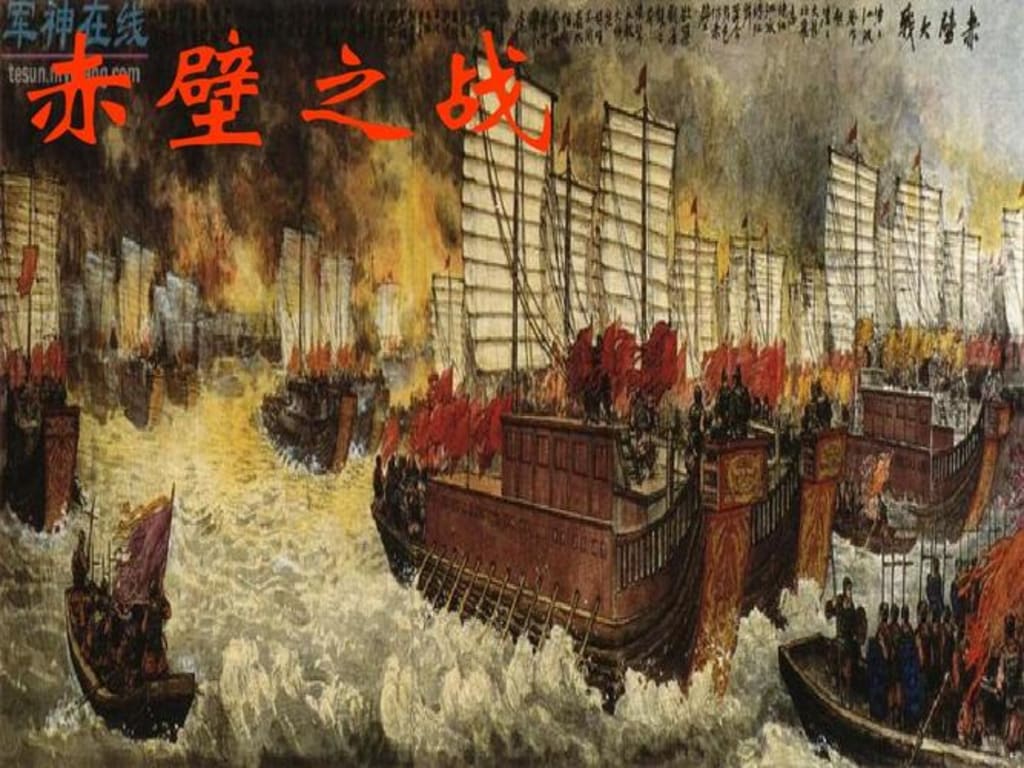
The Battle of Red Cliffs, also known as the Battle of Chibi, is one of the most famous battles in Chinese history. It took place during the Three Kingdoms period (220-280 AD), when three powerful states vied for control of China. The battle was fought between the allied forces of the southern warlords Liu Bei and Sun Quan against the northern warlord Cao Cao.
Background
In 208 AD, the northern warlord Cao Cao decided to lead his army southward to conquer the southern territories. He led an army of over 200,000 soldiers and conquered Jing Province, which was controlled by Liu Bei's ally, Liu Biao. After Cao Cao's conquest, Liu Bei fled to the territory of Sun Quan, who was a warlord controlling the region around the Yangtze River delta.
Together, Liu Bei and Sun Quan formed an alliance to resist Cao Cao's invasion. They planned to ambush Cao Cao's forces at the Red Cliffs, a strategic location near the Yangtze River.
The Battle
Cao Cao's forces arrived at the Red Cliffs in the winter of 208 AD. He had a huge fleet of ships, while his soldiers were equipped with heavy armor and weapons. The southern alliance had fewer troops and ships, but they had a strategic advantage due to their knowledge of the local geography.
Liu Bei and Sun Quan sent their general Zhou Yu to lead the southern forces. Zhou Yu came up with a plan to use fire to defeat Cao Cao's navy. He ordered his men to prepare a huge number of straw boats and fill them with flammable materials like oil, sulfur, and lime powder.
On the day of the battle, Zhou Yu ordered his troops to set the boats on fire and release them upstream towards Cao Cao's fleet. The wind blew the flames towards the enemy ships, creating a massive firestorm. Cao Cao's navy was caught off guard and many of their ships were destroyed.
Cao Cao then ordered his troops to retreat and regroup, but the southern forces pursued them and attacked again. The northern army was now in disarray, and Cao Cao's morale was low. He decided to withdraw his troops and return north.
Significance
The Battle of Red Cliffs was a significant event in Chinese history. It marked the end of Cao Cao's southern campaign and prevented him from unifying China under his rule. Liu Bei and Sun Quan went on to establish the kingdoms of Shu and Wu respectively, which lasted for decades after the Three Kingdoms period.
The battle is also famous for its cultural significance. It has been depicted in literature, art, and film, and has become a symbol of courage, strategy, and patriotism in Chinese culture. The story of the battle is often told to children as an example of how a small force with strategic advantage can overcome a larger opponent.
Analysis
The Battle of Red Cliffs was a classic example of strategy and tactics in warfare. Zhou Yu's plan to use fire against Cao Cao's navy was ingenious and demonstrated the importance of using unconventional tactics in war. The southern alliance's knowledge of the local geography gave them a strategic advantage, which they exploited to great effect.
The battle also showed the importance of leadership in war. Zhou Yu was able to lead the southern forces through his strategic planning and quick thinking on the battlefield. Cao Cao, on the other hand, failed to adapt to the changing circumstances of the battle and was ultimately defeated.
The Battle of Red Cliffs also highlighted the role of luck in warfare. The wind blowing in the right direction allowed the flames from the southern forces to engulf Cao Cao's ships, which ultimately led to his defeat.
Conclusion
The Battle of Red Cliffs was a turning point in Chinese history. It prevented Cao Cao from conquering the south and established two powerful kingdoms that continued to shape Chinese history for centuries. The battle is a testament to the importance of strategic planning, knowledge of local geography, and the use of unconventional tactics in warfare. It remains one of the most famous battles in Chinese history, and a symbol of the country's rich cultural heritage.





Comments
There are no comments for this story
Be the first to respond and start the conversation.